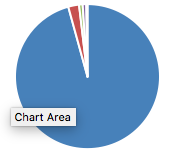How valuable is a high school diploma
This spring, thousands of families will celebrate the time-honored right of passage of high school graduations. Hats will be thrown, class leaders will share their thoughts on the future, and thousands of diplomas will be handed out to our state’s children.
Graduation is a big deal.
And in the ongoing debate over how to improve our state’s education outcomes, the graduation rate is an even bigger deal.
Proponents of traditional district schools love to point to the state’s growing graduation rate (we have the 10th highest graduation rate in the country).
 In fact, the graduation rate is so important that it accounts for 21 percent (30 out a possible 140 points) of the state’s school district accreditation formula.
In fact, the graduation rate is so important that it accounts for 21 percent (30 out a possible 140 points) of the state’s school district accreditation formula.
According to the Missouri Department of Elementary and Secondary Education (DESE), last year 95.7 percent of districts scored a full 30 points for graduation rates (which can be calculated over 4, 5, 6, or even 7 years), 2.4 percent of districts scored 28.5 points, and 1.9 percent of schools 24 points or lower.
So our state is doing really well right?
What is the value of a diploma?
Sadly, graduation rates are only as good as the requirements set to obtain a diploma. A recent op-ed in the Columbia-Missourian by Show-Me Institute Director of Education Policy Susan Pendergrass questions just how rigorous those requirements may be:
“Consider that in 2017, the percentages of Missouri 11th-graders who scored Proficient or above on the state assessments was 35 percent in English/language arts, 15 percent in math, and 20 percent in science. And, according to the Missouri Department of Elementary and Secondary Education, or DESE, just 42.5 percent of 2017 graduates were “College or Career Ready” — meaning that they met or exceeded the state standards for the ACT, SAT, COMPASS, the Armed Services Vocational Aptitude Battery, or ASVAB, or they received an industry-recognized credential, or IRC.”
The data gets more frightening when you consider how students with a Missouri high school diploma perform once they get to college. Data from the Missouri Department of Higher Education (DHE) shows that only 46.8 percent of the Missouri high school students who graduated between 1996 and 2011 that enrolled in state colleges and universities (both two-year and 4-year) actually completed any form of degree and only 35.5 percent completed a bachelor’s degree.
That may be because once they get to college, many high school graduates discover that they really did not learn what they needed to in high school to actually succeed in college.
DHE reports that of the 22,160 high school graduates who enrolled as freshmen in state colleges and universities in 2017, 35.9 percent had to take at least one remedial course, a path that ends up being very expensive for both the student and for the state’s economy.
The economic impact of college remediation courses
A 2016 study by the Center for American Progress estimated college remediation courses cost students and their families across the country over $1.3 billion (with a ‘B’) every year. That study points out that:
“The problem is worse for low-income students and students of color, whose rates of remedial education enrollment are higher than for their white and higher-income peers. According to a recent study, 56 percent of African American students and 45 percent of Latino students enroll in remedial courses nationwide, compared with 35 percent of white students.”
A 2012 study by DHE found similar issues in Missouri and also underlines the reality that students forced to take remedial courses to catch up are significantly more likely to drop out before getting a degree.
Additionally, a 2016 Gallup survey commissioned by the Missouri Chamber of Commerce and Industry found that only 15 percent of Missouri business owners believe that Missouri high schools are preparing students for the workplace.
Increasing access to innovative schools can help
While the problem of increasing high school rigor is a broad topic, other states have found success in improving college outcomes by creating systems that allow students and parents greater access to charter and private schools.
A 2016 study in the Journal of Labor Statistics found that attending Boston’s charter high schools had significant impacts on a student’s likelihood of qualifying for a state-sponsored scholarships, boosted SAT scores sharply and increases the likelihood of taking an Advanced Placement (AP) exam, the number of AP exams taken, and AP scores.
And just last fall, an Urban Institute study showed that Florida’s voucher system not only improved college attendance but also increased college graduation.
« Previous Post: Senator needs to get facts straight on private school choice
» Next Post: Education reform is key to Missouri’s economic success
